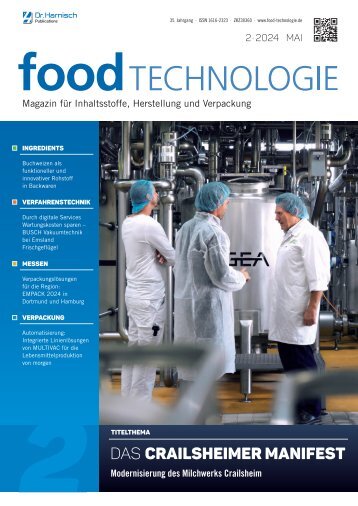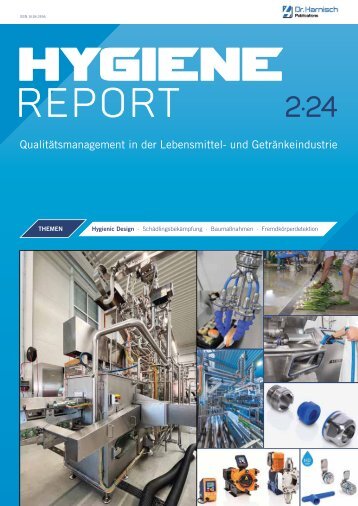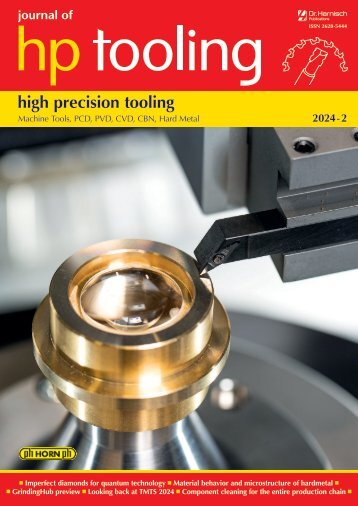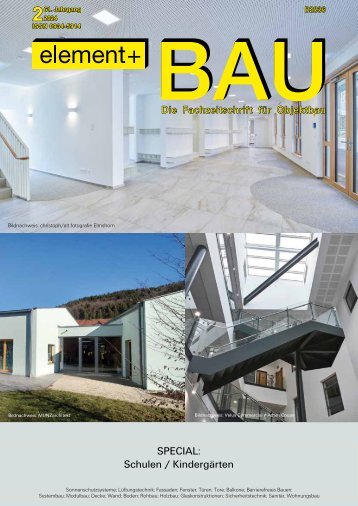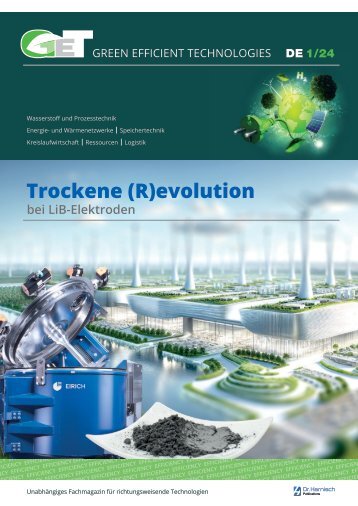GET – GREEN EFFICIENT TECHNOLOGIES – English Language
- Text
- Harnischcom
- Materials
- Valve
- Electricity
- Grid
- Valves
- Technologies
- Efficient
- Pumps
- Hydrogen
- Efficiency
Compressors and systems
Compressors and systems Hydrogen – Interview Hydrogen: the key to an emission-free future? Possibilities, challenges, opportunities – and how AERZEN supports industry and companies Hydrogen technology plays a key role on the path to the desired climate neutrality. Hydrogen is regarded as the energy carrier of the future and is an important milestone for the decarbonisation of industry. Michael Leitsch, Head of Opportunity Engineering at AERZEN, talks about the potential of green hydrogen, the challenges of compression and the advantages of screw compressors. Mr. Leitsch, what is the significance of hydrogen for industry and what is the significance of the different colours grey, blue and green? Michael Leitsch: hydrogen has been used since the early 20 th century as a process gas for the production of ammonia according to the Haber- Bosch process and nowadays plays an important role in three industries in particular: as a raw material in the chemical industry (mainly for the production of methanol and ammonia), in oil refineries for the desulphurisation of fuels and in so-called hydrocracking processes as well as in direct reduction plants for steel production. Since hydrogen occurs in bound form in nature, it must be produced with the use of energy. Depending on the production process, a distinction is made between grey, blue and green hydrogen. Grey hydrogen is produced from natural gas by steam reforming and thus causes corresponding emissions. Currently, between 60% and 70 % of hydrogen is produced from natural gas. In the case of blue hydrogen, the CO 2 produced is captured, which is then further used or stored, i. e. does not escape into the atmosphere. Alternatively, hydrogen can also be produced by water electrolysis, i. e. an electrochemical process. If the electricity used for this comes from renewable energy sources, it is called green hydrogen, which is CO 2 -neutral. Hydrogen is traded as an indispensable resource for a climate-neutral industry. What contribution does the gas make to reducing CO 2 emissions? Michael Leitsch: currently, almost all of the hydrogen produced is obtained from fossil fuels. If grey hydrogen is replaced by green hydrogen, the industry’s CO 2 footprint can be significantly reduced. At the same time, new perspectives are opening up, for example in power generation. Here, hydrogen as an energy carrier and storage medium can enable a further increase in the share and availability of renewable energies. Other areas are transport, especially long-distance and heavy-duty transport, but also rail transport, shipping and aviation, as well as heating and the application in process heat, with a focus on the metalworking industry. These are promising fields of application, which could all make an important contribution to achieving climate targets in future. How optimistic are you about the development of green hydrogen? Michael Leitsch: we consider green hydrogen to be an important future market. Avoiding CO 2 is becoming increasingly important. In addition, power generation from renewable energies will be further expanded. Worldwide, more and more governments are pushing forward research, innovation and product development by means of national hydrogen strategies, which is also accompanied by a corresponding upscaling of electrolysis plants. From this point of view, we see a further strong market rampup for green hydrogen as very realistic. This assessment is also consistent with the opinion our clients, whom we support in the development of projects at various stages of planning. Hydrogen still plays a subordinate role in the energy transition, but this could soon change. As a rule, hydrogen must be compressed to a certain pressure after electrolysis for the subsequent processes. What special features need to be taken into account? Michael Leitsch: hydrogen is the lightest naturally occurring element, which makes compression more difficult in general. Since it has a very low energy density in relation to the volume flow (energy content per volume unit), large electrolysis plants also have to compress correspondingly high volume flows, which has an effect on the sizes and thus on the investment costs, installation areas, etc. of the machine equipment. In addition, hydrogen is very reactive, i. e. highly flammable. Special attention is, therefore, paid to the required explosion protection. The formation of an ignitable mixture with the atmospheric oxygen must be avoided 22 GREEN EFFICIENT TECHNOLOGIES 2022
Compressors and systems Hydrogen – Interview Fig. 1: With this water injected screw compressor AERZEN further expands its portfolio of screw compressors for hydrogen compression. at all costs. However, this also applies to other applications with flamm able or combustible gases, with which AERZEN's process gas division has extensive experience. Where do you see the advantages in using screw compressors compared to other compressor technologies? Michael Leitsch: screw compressors combine decisive advantages of reciprocating and turbo machines. Due to the displacement prin ciple, they are also suitable for compressing very light gases – in contrast to turbo machines, with which only a very small pressure difference per stage can be achieved for gases with low molecular weights. In addition, screw compressors are rotary machines which, compared to reciprocating compressors, have fewer moving parts, a much smaller space requirement and a considerably re duced effort for maintenance and for the compensation of pulsations induced in the piping. Another important advantage is the possibility of injecting water into the conveying chamber. On one hand, this makes it possible to re duce the heat of compression, and on the other, water can act as a sealing medium between the oil and gas chambers, e. g. when using a waterpurged mechanical seal. Since the hydrogen leaves the electrolysis in a water-saturated state anyway, the injection of water is not critical. Where can screw technology best play to its strengths? Michael Leitsch: screw compressors can play a decisive role, especially for pre-compression in atmospheric electrolysis plants – especially for large installed electrolysis capacities from approx. 50 MW, which corresponds to a volume flow of approx. 11,000 m³/h. Reciprocating compressors usually reach their limits in terms of size (piston diameter and required installation area) with these quantities. Today's plants are getting bigger and bigger, reaching up to several 100 MW. Screw compressors can be used here to pre-compress the hydrogen. The resulting reduced volume flow enables economical use of the downstream reciprocating compressors, which are still needed to achieve the required discharge pressures. In the meantime, however, we have also received feedback from our customers, who consider the use of screw compressors to be the favoured solution even for smaller volume flows. What added value does AERZEN provide for the hydrogen industry? Michael Leitsch: as process gas specia list, AERZERN has been dealing with the topic of hydrogen compression for decades, as it occurs as a component in gas mixtures for typical process gas applications, for example in hydrogen recovery in PSA applications or in direct reduction plants for steel production. For certain chemical applications we have already successfully manufactured screw compressors for pure hydrogen compression, which means that AERZEN has already gained relevant experience and expertise in the subject. Compared to most competitors, we have both oil-flooded and oilfree screw compressors in our portfolio, as well as – for lower compression ratios – blowers based on the Roots principle. In addition, we are specialists for customised compressor and blower solutions in the process gas sector and thus have the necessary flexibility to offer the right solution for the respective application. In addition, we are consistently driving forward the further development of our products in this area. In August, for example, we have presented the newly developed screw compressor VRW at the Achema chemical trade fair in Frankfurt, with which we can realise significantly higher pressure differences and efficiencies in hydrogen compression. With 50 locations worldwide, we are also represented near the installation sites with contact persons, who take care of the respective service support for existing plants. Mr. Leitsch, thank you very much for the interview. Fig. 2: New series of VRW screw compressorpackage for hydrogen compression GREEN EFFICIENT TECHNOLOGIES 2022 23
- Seite 1 und 2: GREEN EFFICIENT TECHNOLOGIES 2022 H
- Seite 3 und 4: Editorial Hydrogen in the atmospher
- Seite 5 und 6: HAMPRO® HIGH-PRESSURE PROCESS TECH
- Seite 7 und 8: HOW EFFICIENT IS YOUR HYDROGEN COMP
- Seite 9 und 10: Leading article combustible waste (
- Seite 11 und 12: NEW: THE ELECTRIC STEAM GENERATOR [
- Seite 13 und 14: Cover story Fig. 3: In the course o
- Seite 15 und 16: From the research Hydrogen operate
- Seite 17 und 18: From the research Hydrogen Hydrogen
- Seite 19 und 20: Pumps and systems Seawater desalina
- Seite 21: Driving the world Intelligent power
- Seite 25 und 26: Compressors and systems Biomethane
- Seite 27 und 28: Compressors and systems Biomethane
- Seite 29 und 30: Components Hydrogen energy from ful
- Seite 31 und 32: FILTECH Fig. 4: A total of eight en
- Seite 33 und 34: Components Elastomer seals and biol
- Seite 35 und 36: lit modular casing UMPE less steel,
- Seite 37 und 38: Components Radar sensor Fig. 3: The
- Seite 39 und 40: Components 3-phase decanter Fig. 2:
- Seite 41 und 42: Components Sustainable concrete the
- Seite 43 und 44: Trade fairs and events VALVE WORLD
- Seite 45 und 46: Trade fairs and events FILTECH 2023
- Seite 47 und 48: Companies - Innovations - Products
- Seite 49 und 50: Companies - Innovations - Products
- Seite 51 und 52: Companies - Innovations - Products
- Seite 53 und 54: Companies - Innovations - Products
- Seite 55 und 56: Brand name register NETZSCH Pumpen
- Seite 57 und 58: Come and see for yourself: www.harn
Unangemessen
Laden...
Magazin per E-Mail verschicken
Laden...
Einbetten
Laden...








































